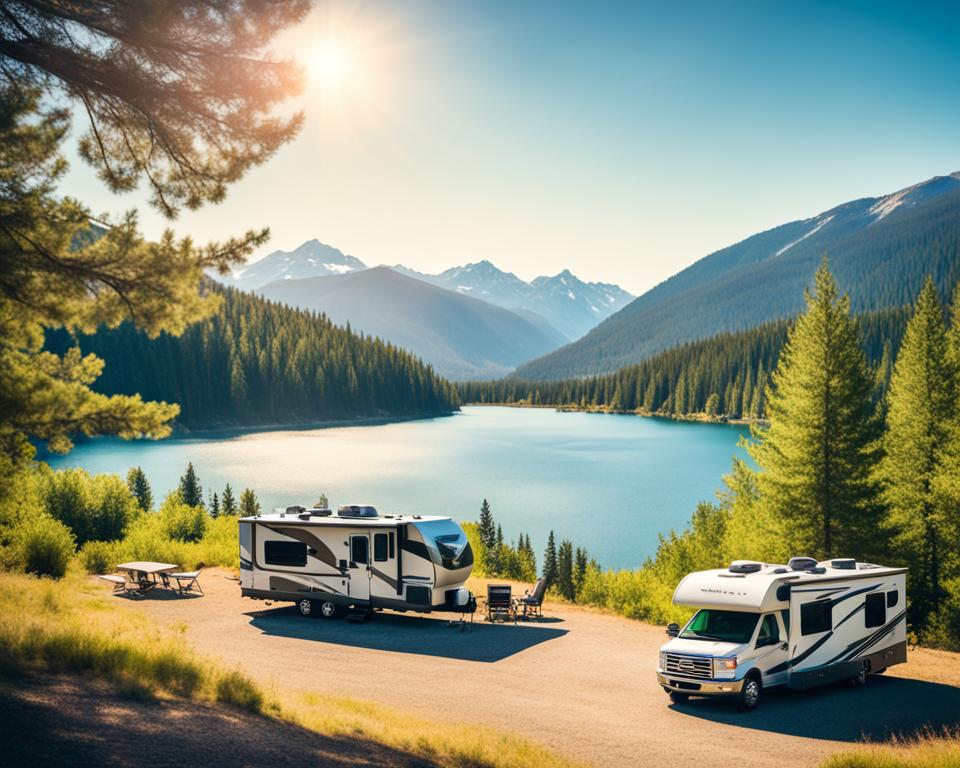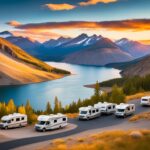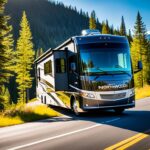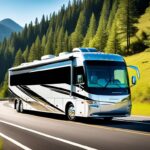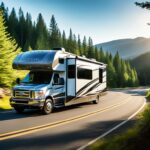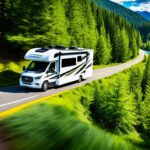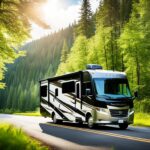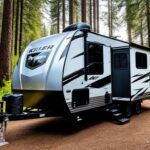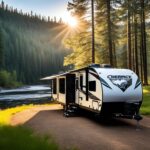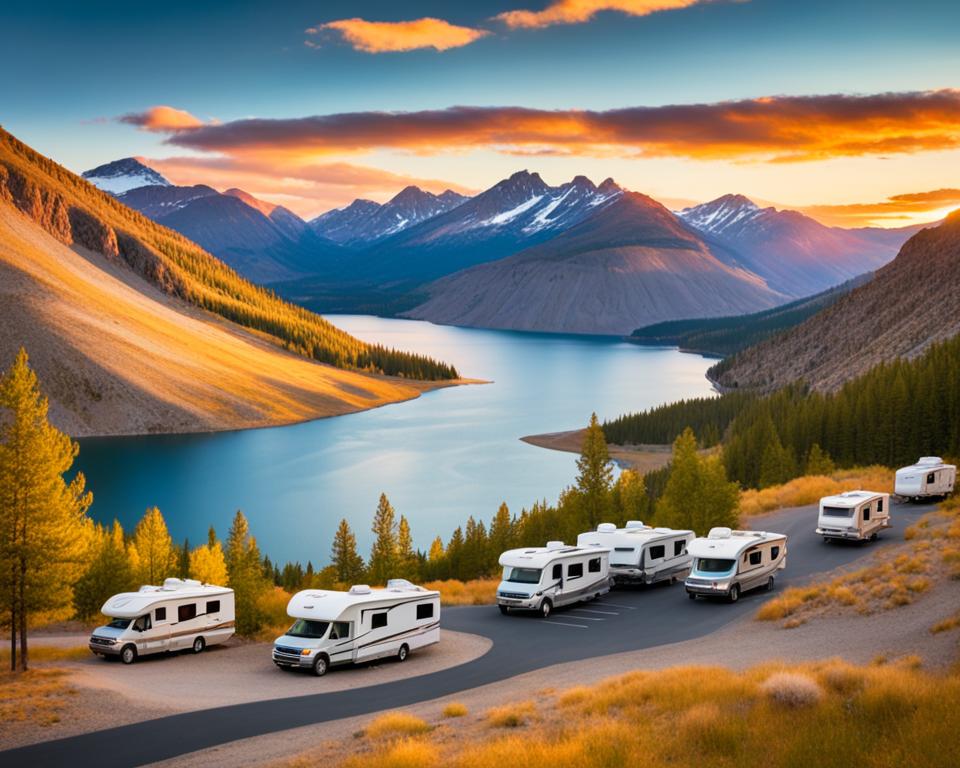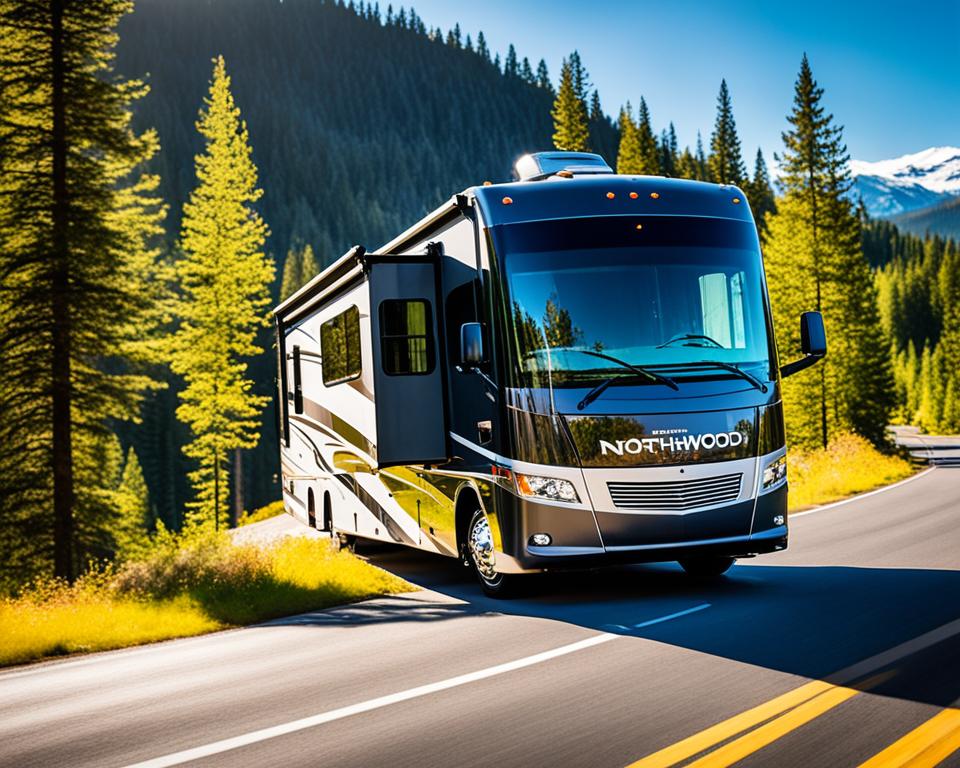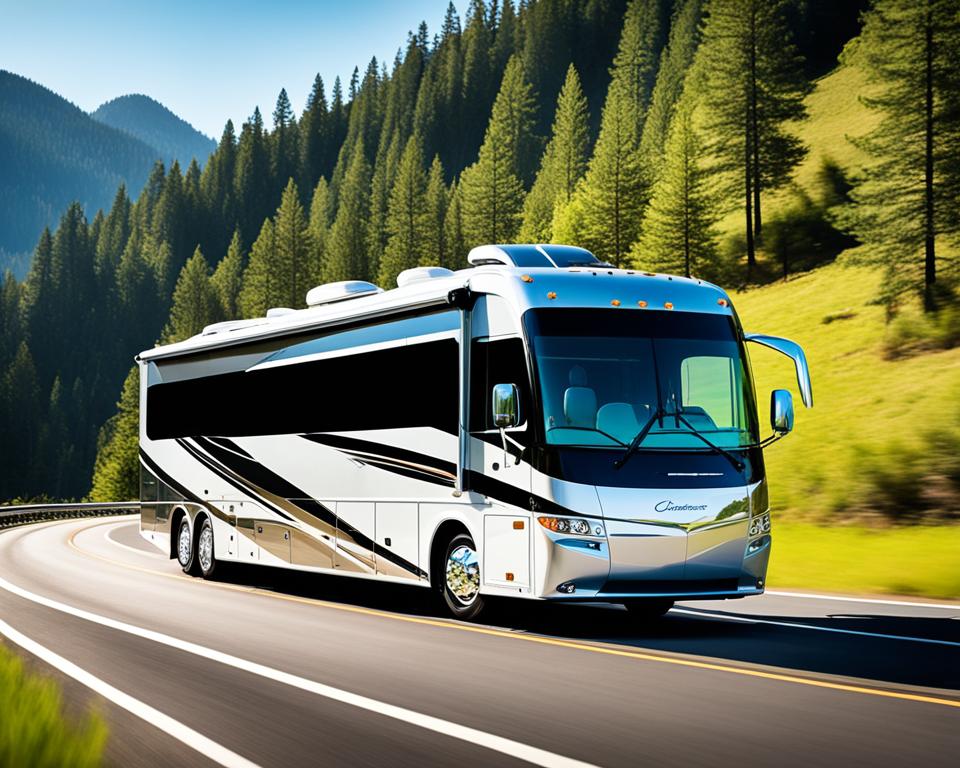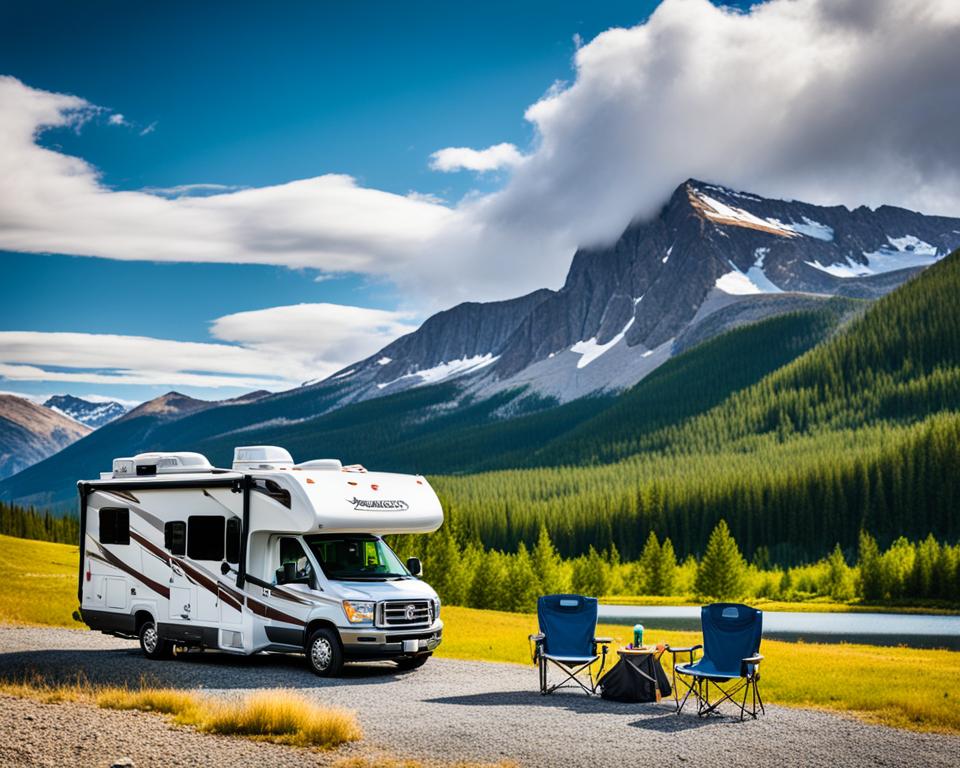Are you a beginner to the world of RVing and eager to experience the thrill of camping off the grid? RV boondocking, also known as dry camping, offers the perfect opportunity to disconnect from the hustle and bustle of daily life and immerse yourself in the wonders of nature.
However, embarking on a boondocking adventure requires careful planning and preparation to ensure a safe and enjoyable experience. In this article, we will provide you with essential tips that every newbie RVer should know before venturing into the world of boondocking. From finding the best boondocking spots to conserving resources and staying safe, we’ve got you covered.
Key Takeaways:
- Boondocking, or dry camping, is camping in remote areas without hookups or amenities.
- Proper preparation is crucial for a successful boondocking trip, including essential gear and scouting the location in advance.
- Public lands such as national forests and BLM land offer great boondocking opportunities.
- Must-have boondocking gear includes a generator, portable water jugs, and a waste tote.
- Conserving resources like water and waste management is important while boondocking.
What is Boondocking?
Boondocking, also known as RVing off the grid or dry camping, is a unique form of camping where RVers venture into remote areas with minimal to no amenities. Unlike traditional campground camping, boondocking doesn’t offer hookups for water, electricity, or sewer. Instead, RVers rely on self-contained systems and make use of the resources they have. This type of camping is typically done in public lands such as national forests or Bureau of Land Management (BLM) lands, where dispersed camping is allowed.
Boondocking provides a liberating experience for RVers, allowing them to escape the hustle and bustle of crowded campgrounds and embrace solitude in nature. It offers the opportunity to immerse oneself in the tranquility of untouched landscapes, away from the distractions of modern life. Whether it’s waking up to the sound of chirping birds, gazing at star-filled skies, or exploring hidden trails, boondocking enables outdoor enthusiasts to connect with the natural world on a deeper level.
While boondocking may lack the conveniences of developed campgrounds, it compensates by offering a sense of freedom and adventure. RVers who choose to embark on boondocking journeys relish the opportunity to explore off-grid locations, discover secluded spots, and create their own unique experiences. It allows them to travel off the beaten path, uncover hidden gems, and find hidden tranquility.
How to Prepare for Boondocking
Before embarking on a boondocking trip, it is important to make sure you are prepared. This includes having essential items for boondocking such as camping gear, water supply, and a reliable power source.
Packing the Essentials
To ensure a comfortable and enjoyable boondocking experience, it is crucial to pack the necessary items. Consider including the following:
- Camping gear: Tents, sleeping bags, camping chairs, and cooking utensils
- Water supply: Invest in a water bladder or jerry cans to carry and store an ample water supply
- Power supply: Opt for portable solar panels or a generator to meet your power needs
- Food: Stock up on non-perishable food items and snacks to sustain you during your boondocking adventure
Having these essential items will ensure that you have the necessary resources to enjoy your time off the grid.
Scouting the Boondocking Area
Prior to heading out on your boondocking trip, take the time to research and scout the area. Look for suitable boondocking locations that meet your preferences and needs. Consider factors such as terrain, accessibility, and available amenities. It is also important to check the weather forecast to avoid any unforeseen challenges during your trip.
By scouting out the boondocking area in advance, you can better plan and prepare for your adventure, ensuring a safe and enjoyable experience.
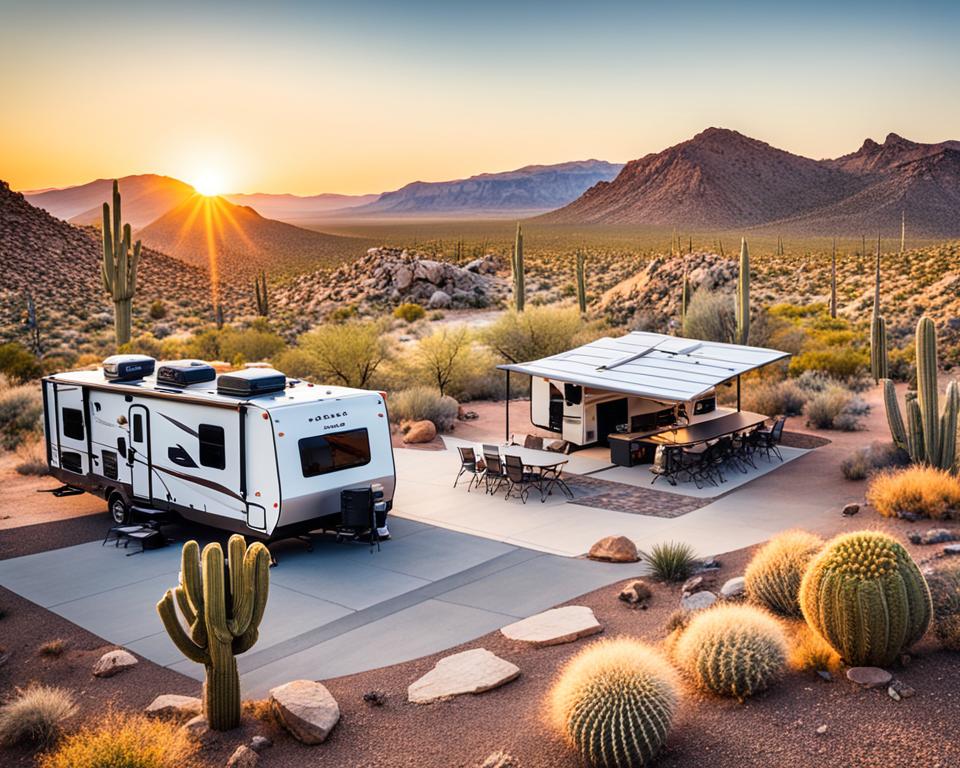
Having the right preparation and essential items will enhance your boondocking experience, allowing you to fully enjoy the freedom and beauty of camping off the grid.
Finding Boondocking Spots
One of the exciting aspects of boondocking is the opportunity to explore various locations in the great outdoors. Finding the best boondocking spots requires a bit of research and knowledge about different public lands that allow dispersed camping. Here are some options to consider:
Public Lands
Public lands, such as national forests and Bureau of Land Management (BLM) areas, are popular choices for boondocking. These lands provide RVers with the freedom to camp in designated areas, away from crowded campgrounds and closer to nature.
- Bureau of Land Management (BLM) Land: BLM land offers vast opportunities for boondocking across the United States. With well over 245 million acres of public land, RVers can find secluded spots to set up camp and enjoy the beauty of the wilderness. BLM land typically allows dispersed camping for up to 14 days, making it a fantastic option for extended stays.
- National Forest Service Land: National forests also provide ample boondocking opportunities. With numerous campgrounds and designated dispersed camping areas, RVers can find a mix of primitive and developed camping options. Each national forest has its own rules and regulations, so it’s essential to check the specific guidelines for the area you plan to visit.
- Wildlife Management Areas: Wildlife management areas are managed by state wildlife agencies and often offer boondocking options. These areas are known for their scenic beauty and provide opportunities for wildlife viewing and outdoor activities.
Boondocking Memberships
In addition to public lands, there are also boondocking memberships that provide access to unique and private boondocking spots. These memberships often include stays on private property, vineyards, farms, and more. Two popular boondocking membership options are:
- Harvest Hosts: Harvest Hosts allows RVers to stay overnight at wineries, farms, and other unique locations. With a Harvest Hosts membership, you can immerse yourself in beautiful landscapes while supporting local businesses.
- Boondockers Welcome: Boondockers Welcome connects RVers with hosts who provide free overnight parking on private property. It’s a fantastic way to meet fellow travelers and enjoy local hospitality along the way.
With a combination of public lands and boondocking memberships, RVers have a wide range of options for finding the best boondocking spots. Whether you prefer the solitude of the wilderness or the unique experiences offered by private properties, there’s a perfect boondocking spot waiting for you.
Must-Have Boondocking Gear
When it comes to boondocking, having the right gear is essential to ensure a successful and enjoyable camping trip off the grid. Here are some must-have boondocking gear items that every RVer should consider:
- Reliable Generator: A reliable generator is crucial for powering your RV and essential appliances during boondocking. Look for a quiet and fuel-efficient model that meets your power needs.
- Portable Water Jugs: Portable water jugs are essential for storing and transporting water to your boondocking location. Opt for durable and easy-to-carry jugs that can hold an ample water supply.
- Blue Boy Waste Tote: A Blue Boy waste tote is an excellent accessory for managing your grey water while boondocking. It allows you to easily transport and dispose of waste without the need for full hookups.
- Good Flashlight: A good flashlight is a must-have for navigating your surroundings during nighttime boondocking adventures. Look for a durable and bright flashlight with long battery life.
- Shower Wipes: Shower wipes are a convenient hygiene solution when traditional shower facilities are not available. They allow for quick and refreshing cleanup while conserving water.
- First Aid Kit: A well-stocked first aid kit is essential for any camping trip, including boondocking. Include supplies like bandages, antiseptic ointment, pain relievers, and other essentials.
- Extra Batteries: Having extra batteries on hand is essential for powering your various devices and appliances. Make sure to stock up on rechargeable or disposable batteries that fit your needs.
- Cell Phone Booster: A cell phone booster enhances your signal strength in remote locations, ensuring you stay connected while boondocking. It allows for better communication and emergency preparedness.
- Emergency Weather Radio: An emergency weather radio is a valuable tool for staying informed about weather conditions in your boondocking area. Look for a reliable radio with NOAA alerts and a hand-crank or solar-powered option.
With these must-have boondocking gear items, you’ll have the necessary resources to power your RV, access water, stay connected, and handle emergencies while enjoying the freedom of boondocking.
| Item | Description |
|---|---|
| Reliable Generator | A fuel-efficient and quiet generator to power your RV and essential appliances. |
| Portable Water Jugs | Durable jugs for storing and transporting water to your boondocking location. |
| Blue Boy Waste Tote | A portable waste tote for managing grey water and easy waste disposal. |
| Good Flashlight | A bright and durable flashlight for nighttime navigation. |
| Shower Wipes | Convenient wipes for quick hygiene cleanup when traditional shower facilities are unavailable. |
| First Aid Kit | A well-stocked kit with essential medical supplies for emergencies. |
| Extra Batteries | Additional batteries to power devices and appliances. |
| Cell Phone Booster | A device that enhances cell phone signals in remote areas. |
| Emergency Weather Radio | A radio that provides weather alerts and can be powered by a hand-crank or solar. |
Tips for Conserving Resources While Boondocking
Conserving resources is an important aspect of boondocking, allowing you to enjoy the freedom of camping off-grid while minimizing your environmental impact. By implementing simple yet effective practices, you can conserve water and manage waste efficiently during your boondocking adventures.
Water Conservation
One of the key considerations when boondocking is managing your water supply effectively. Here are some tips for conserving water:
- Turn off the tap: Practice turning off the tap while brushing your teeth or washing dishes to reduce water usage.
- Navy showers: Take Navy showers, where you only turn on the water to rinse, rather than having a continuous flow while showering. This helps conserve a significant amount of water.
- Collect and reuse water: Collect and reuse water when possible, such as capturing rainwater for tasks like dishwashing or watering plants.
Waste Management
Proper waste management is crucial to minimize your impact on the environment while boondocking. Consider the following waste management tips:
- Portable waste tote: Utilize a portable waste tote for collecting and transporting grey water from your RV to designated dump stations.
- Find dump stations: Research and locate nearby dump stations where you can properly dispose of waste to maintain cleanliness and protect the environment.
- Pack it in, pack it out: Adhere to the “pack it in, pack it out” policy for garbage, ensuring you take all litter and waste with you when leaving a boondocking site.
Remember, boondocking is about enjoying the beauty and tranquility of nature while leaving minimal impact. By practicing water conservation and waste management, you can make a positive difference and contribute to the preservation of boondocking locations for future campers.
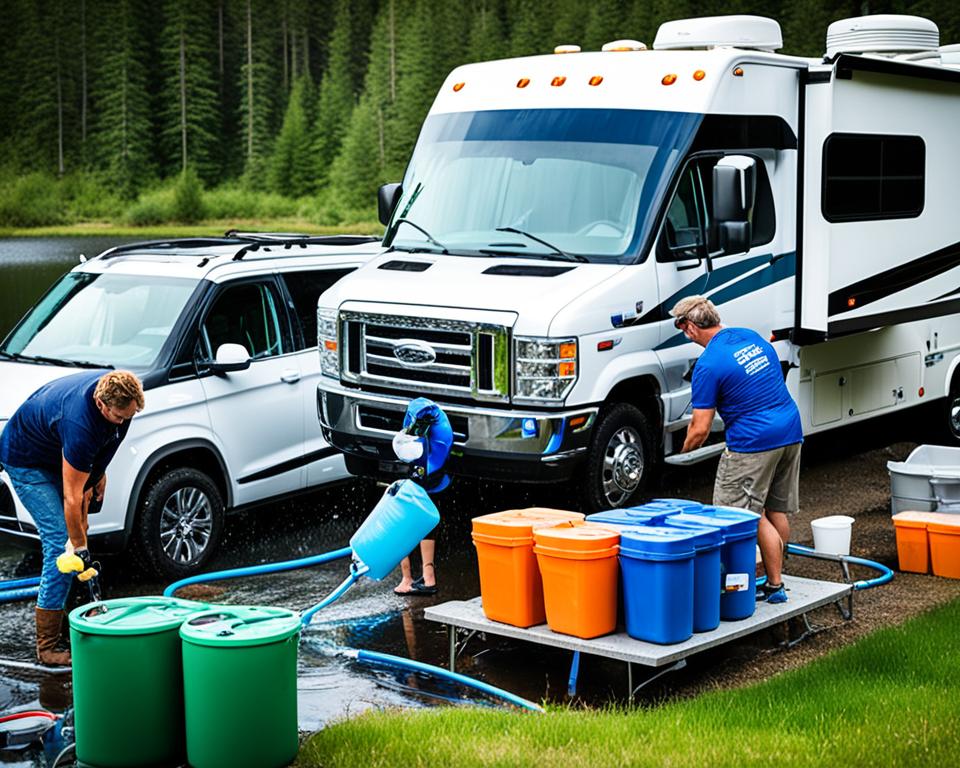
Implementing these tips for conserving resources while boondocking will not only help you extend your water supply and manage waste effectively but also contribute to a more sustainable camping experience. By being mindful of your resource usage and taking proactive steps to minimize waste, you can fully embrace the boondocking lifestyle while minimizing your environmental footprint.
Boondocking Safety Tips
Ensuring your safety while boondocking is essential. By following a few simple safety precautions, you can have a secure and enjoyable remote camping experience.
Research and Preparation
Before embarking on a boondocking trip, take the time to research the area thoroughly. Familiarize yourself with the location, including any potential hazards, wildlife, or weather conditions that may affect your stay. Checking the weather forecast is crucial to anticipate any extreme conditions that could pose risks.
Scouting the boondocking location in advance can help you identify potential safety concerns, such as uneven terrain, excessive foliage, or proximity to bodies of water. This will enable you to select a safe and suitable spot for your campsite.
Know and Follow Local Regulations
When boondocking on public lands, it is important to be aware of the specific regulations and rules for camping in that area. Some locations may have restrictions on campfires, off-road vehicle use, or noise levels. Respecting these regulations not only ensures your safety but also helps protect the natural environment.
Invest in a Cell Phone Booster
Remote camping often means limited cellular reception. To enhance communication capabilities in remote areas, consider investing in a cell phone booster. This device amplifies cell signals, allowing for better connectivity during emergencies or when you need to reach out for assistance.
Always Have a Backup Plan
Even with the best planning, unforeseen circumstances can arise during boondocking. Always have a backup plan in case of emergencies or unexpected challenges. This could include alternative camping options, knowing the location of the nearest medical facility or supplies, or having a backup power source.
Follow these boondocking safety tips to ensure a secure and worry-free camping experience. By taking precautions, being prepared, and respecting the environment, you can fully enjoy the freedom and tranquility of remote camping.
Boondocking Etiquette
When it comes to boondocking, practicing proper etiquette is crucial for maintaining the natural environment and preserving the privilege of camping on public lands. Following Leave No Trace principles and being considerate of other campers are key components of boondocking etiquette. Here are some essential guidelines to keep in mind:
Leave No Trace
Leave No Trace is a set of principles that promote responsible outdoor practices to minimize our impact on the environment. When boondocking, it is important to adhere to these principles:
- Leave the campsite as you found it: Ensure you clean up after yourself and leave the area free of any litter or debris.
- Dispose of waste properly: Use designated dump stations for dumping gray and black water, and dispose of trash in appropriate containers.
- Respect wildlife: Keep a safe distance from wildlife and never feed them. Remember, wildlife should remain wild.
Respectful Camping
Being respectful of other campers is vital for a harmonious boondocking experience. Consider the following:
- Noise levels: Keep noise to a minimum, especially during quiet hours. Respect the peacefulness of the surroundings and other campers’ need for solitude.
- Maintain a safe distance: Give fellow campers ample space to enjoy their own boondocking experience. Avoid setting up camp too close to others unless explicit permission is granted.
- Avoid overcrowding popular sites: Some boondocking locations can become crowded during peak seasons. Be mindful of capacity limits and explore alternative spots when popular areas are filled to preserve the natural beauty and avoid putting excessive strain on the environment.
Remember, boondocking is about embracing nature and solitude. By following boondocking etiquette, each camper can contribute to the preservation of these special camping opportunities.
So, when planning your boondocking adventures, always keep in mind the importance of Leave No Trace, respectful camping, and being considerate of others. Let’s work together to ensure that boondocking remains a sustainable and enjoyable experience for all.
| Boondocking Etiquette | Key Points |
|---|---|
| Leave No Trace | – Clean up the campsite – Dispose of waste properly – Respect wildlife |
| Respectful Camping | – Keep noise levels low – Maintain a safe distance from other campers – Avoid overcrowding popular sites |
Conclusion
Boondocking offers a unique and adventurous way for beginners to experience RV camping. By following boondocking tips and practicing good etiquette, RVers can confidently embark on off-grid adventures and enjoy the freedom, solitude, and natural beauty that boondocking has to offer.
Proper preparation is key when venturing into boondocking. Beginners should ensure they have the essential gear such as a reliable generator, portable water jugs, and a Blue Boy waste tote. Additionally, it’s crucial to respect the environment by practicing water conservation, waste management, and adhering to the Leave No Trace principles.
So, for those ready to embrace the thrill of camping off the grid, pack your bags, find a suitable boondocking spot, and start exploring the great outdoors. Whether it’s a national forest, BLM land, or other public lands, boondocking for beginners is a rewarding experience that allows you to connect with nature and discover new possibilities.
FAQ
What is boondocking?
Boondocking, also known as dry camping, refers to camping in remote areas without hookups or amenities. It is a popular way for RVers to explore off-grid locations and enjoy the freedom of being in nature.
How do I prepare for boondocking?
To prepare for boondocking, make sure to have essential items such as camping gear, water supply, and a reliable power source. Scout out the boondocking area in advance and check the weather forecast to ensure a safe and enjoyable trip.
Where can I find boondocking spots?
You can find boondocking spots on public lands such as national forests and Bureau of Land Management (BLM) lands, as well as through boondocking memberships like Harvest Hosts and Boondockers Welcome.
What gear do I need for boondocking?
Must-have boondocking gear includes a reliable generator, portable water jugs, a Blue Boy waste tote, a good flashlight, shower wipes, a first aid kit, extra batteries, a cell phone booster, and an emergency weather radio.
How can I conserve resources while boondocking?
To conserve resources while boondocking, practice water-saving habits, properly manage waste, and follow Leave No Trace principles. This includes turning off the tap while brushing your teeth, using a portable waste tote for grey water, and packing out your garbage.
How can I stay safe while boondocking?
Stay safe while boondocking by researching the area, checking the weather forecast, and scouting the location in advance. Be aware of local regulations and consider investing in a cell phone booster for better communication in remote areas.
What is boondocking etiquette?
Boondocking etiquette involves following Leave No Trace principles, properly disposing of waste, and being considerate of other campers. Respect the natural environment, wildlife, and other campers by leaving your campsite as you found it and avoiding overcrowding popular boondocking sites.

